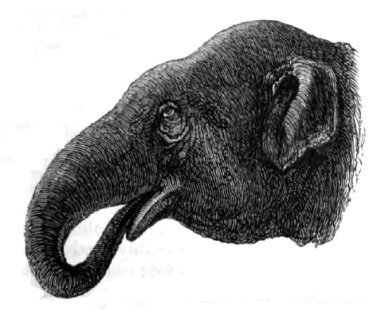Contents
What are African elephants?
Characteristics of African elephants
Common name: African bush elephant
Scientific name: Loxodonta africana
– Common names in other languages:
- Español / Spanish: Elefante africano
- Français / French: Éléphant de savane d’Afrique
- Català / Catalan: Elefant africà de sabana
- Galego / Galician: Elefante africano de sabana
- Euskara / Basque: Afrikar elefante
- Italiano / Italian: Elefante africano
- Português / Portuguese: Elefante-africano
- Deutsch / German: Afrikanische Elefant
- Русский / Russian: Саванный слон
- Nederlands / Dutch: Savanneolifant
- Română / Romanian: Elefant african
- Svenska / Swedish: Savannelefant
– Scientific classification:
Class: Mammalia
Order: Proboscidea
Family: Elephantidae
Features:
- Length: Up to 7 m males.
- Heigth: 3 – 4 m the male. 2’5 – 3 m females.
- Weight: 3000 – 7000 kg males. 3000 – 4000 kg females.
- Habitat: African savanna
- Geographic range: Sub-Saharan Africa.
- Food habits: Herbivore (mainly herbs, also trees and shrubs).
- Behavior: Terrestrial, gregarious, diurnal, nocturnal.
- Reproduction: Viviparous. Gestation: 22 months. Birth: 1 baby.
- Predators: Lions, hienas, wild dogs, crocodiles.
- Lifespan: 50 – 80 years.
Physical description of African elephants
 Africant elephants are the largest terrestrial mammals in the world. They never stop growing throughout its life. From their birth untill 4 years old, their weight increases between 10 to 20 kg per day.
Africant elephants are the largest terrestrial mammals in the world. They never stop growing throughout its life. From their birth untill 4 years old, their weight increases between 10 to 20 kg per day.

African elephants are bigger than Asian elephants. The ears of these animals are also bigger than those of the Asian species. African elephants have big ears to dissipate the body heat. Through their body surface these animals also loses a little body heat, although the ears are the best “radiators” of them. They have a huge surface in comparison to their weight.
To regulate their body heat, in addition to the latter strategy, these animals also make some bathes with mud.
They have huge fangs that serve to break off branches, dig the ground or defend against enemies. The long tusks of pachyderms, in fact, are their incisor teeth.
Another feature that identifies an African elephant is its long trunks. The trunk of these mammals is its nose and serves to smell, touch, wash, transport food or spread the dust over the back.
To distinguish one individual from another, we can look at the scars and other marks of the ears or other defects of the animal, such as the loss of a tusk.
African elephant behavior
Elephants live in herds consisting of adult females and their young. The oldest female is the leader of the group and she defends it from any enemy. The young 12-year-old male elephant is expelled from the group because it has reached adulthood, because it’s sexually mature.
When there is availability of food in the wet season, the herds of elephants are more compact, while in the dry season they disperse.
The elephant is unable to sweat because it does not have sweat glands, so it has to bathe in the mud, to provide the necessary freshness in the hot days of the African savanna.
African elephant food habits
They feed mainly on grasses, however, in times of drought depends on the shrubs and trees to feed and eats its rough bark.
Elephants have a faster intestinal transit than ruminants, which allows them to swallow larger quantities of food in less time than ruminants. These animals can increase their ingestion capacity.
African elephants ingest soil to supplement their mineral needs.
African elephant enemies
These huge aniamls are in danger of extinction due to the ivory trade.
Elephants have no natural enemies, except when they are cups.
![]() More information on other wild animals.
More information on other wild animals.









